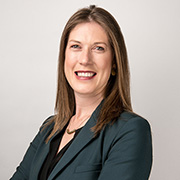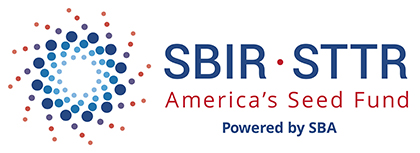For discussion
December 2020
What is America’s Seed Fund? Opportunity for North Dakota Innovators

Brittany Sickler serves as the Senior Innovation Policy Advisor for the U.S. Small Business Administration’s (SBA) Office of Investment and Innovation in Washington, DC. She directs a wide range of programs and initiatives within the R&D innovation ecosystem, mobilizing networks across the country to increase support for deep tech entrepreneurs, increasing their potential to shape the future. She is originally from Bismarck, ND.
Did you know over $4 billion in federal research and development (R&D) funding each year supports innovative entrepreneurs building out high-risk, next generation technologies? America’s Seed Fund has become an important resource for a wide range of startups, researchers, and innovators working on big ideas but lacking access to capital.
Background
America’s Seed Fund, better known to some as the Small Business Innovation Research (SBIR) and Small Business Technology Transfer (STTR) programs, has been around for almost 40 years. The programs span 11 federal agencies with significant external R&D budgets, a percentage of which provides early stage funding to roughly 5,000 small businesses a year.
The two programs are coordinated by the U.S. Small Business Administration (SBA), who is charged with helping small businesses start and grow. SBA’s Office of Innovation and Technology sets the guiding policy across the SBIR/STTR agencies, provides training and outreach, and most notably, funds and supports organizations within the innovation ecosystem to build the SBIR/STTR pipeline. Potential applicants benefit from specialized assistance and mentoring, and we work with a variety of entities to ensure access regardless of geography.
How Does it Work
SBIR/STTR funding is designed to explore new, innovative ideas, not products currently ready to go to market. The programs provide rather broad opportunities for small businesses to access capital when they are not a fit for investment or financing due to the early nature of their technologies. The two programs have the same base structure and goals with a fundamental difference in eligibility, as the STTR program requires a specific level of participation from a nonprofit research institution.
Both programs allow small businesses to compete for cash awards in a wide range of technology areas: from space exploration to biomedical products, advanced robotics to ag-tech, energy to artificial intelligence, national security, and more. Some of the big names (that started out small in the program) include Qualcomm, Symantec, 23&Me, iRobot, and Ilumina.
Applicants submit proposals to win either grants or contracts, depending on the federal agency. SBIR/STTR funding is provided in two phases, meant to take innovations all the way from lab to market. The proof-of-concept stage (Phase I) typically lasts from 6-12 months, and ranges from $50,000-$250,000. The more significant R&D period (Phase II) lasts about 24 months and typically provides $600,000-$1.7 million. There is a commercialization stage known as Phase III, but it does not consist of SBIR funding, but other public or private funds.
Despite challenges in putting together a competitive proposal, small businesses who participate in the programs benefit in several ways: they retain all equity in their company, they do not give up rights to their intellectual property, and a Phase III contract with any federal agency extending their R&D work does not have to be competed with other businesses.
Impact
The SBIR/STTR programs were initially created to support scientific excellence and technological innovation through the investment of federal research funds in critical American priorities, and to build a strong national economy. Every funding opportunity relates to the mission areas of its agency, for instance enhancing the nation’s defense, expanding energy capabilities, advancing health care, improving the ability to manage agriculture, and harnessing big data.
Over the past 38 years, participating agencies have executed almost 180,000 awards totaling over 55 billion dollars. These awards facilitated the advancement of countless new technologies, creating thousands of jobs and strengthening local and regional economies across the country.
North Dakota Involvement
Award levels vary greatly across the states and territories, each of which has its own innovation ecosystem with different institutions, resources, and people.
North Dakota’s portion of SBIR/STTR awards is currently one of the smallest, at just 154 awards totaling $136 million since 1982. Looking at recent changes, there were 18 Phase I awards from 2010-2014, compared with just 6 awards from 2015-2019. Conversely, the total budget across the programs more than doubled from almost two billion in 2014 to over four billion in 2020. There are now more funding opportunities available, but fewer North Dakota applicants competing for, and winning those awards.
Despite strong support across North Dakota for startups and entrepreneurs, there are relatively few entities, programs, or even mentors available and equipped to help innovators navigate the SBIR/STTR world. By enhancing the capacity of local and regional innovation ecosystems, we can in turn increase the odds for North Dakota-based SBIR/STTR applicants to develop their research and grow their companies.
Science, technology, engineering, and other innovation-related disciplines affect our everyday lives. In the face of a pandemic, we turn to epidemiologists and virologists for solutions. When we no longer recognize the weather patterns in regions where we live, we ask meteorologists and earth scientists for answers. When information is needed more quickly, computer scientists and physicists often provide the needed breakthroughs.
SBIR/STTR awardees are building businesses that provide solutions to challenging problems and enable our communities to thrive. Our team’s goal is to work with a variety of partners to ensure that the innovators and companies involved represent truly diverse geographies and populations, allowing even more promising ideas to reach their full potential.
Please connect with us at www.sbir.gov for more information on the participating agencies, award data, success stories, funding opportunities, and how you can reach our team.

